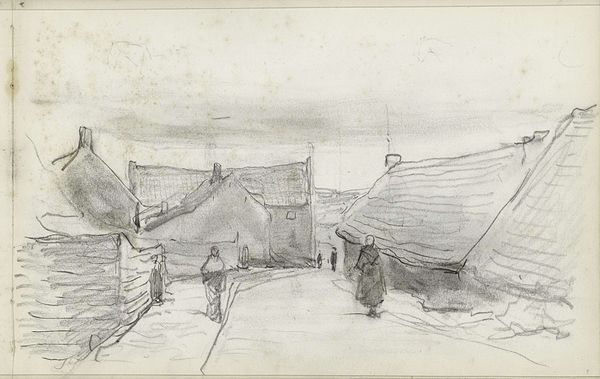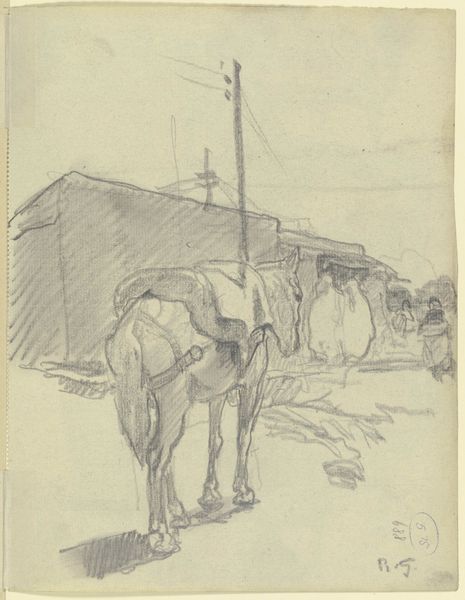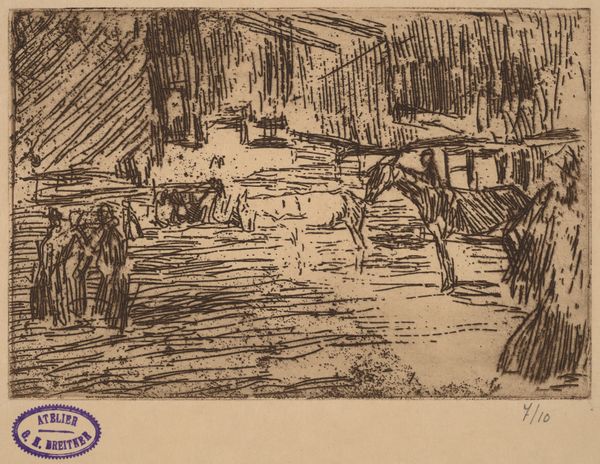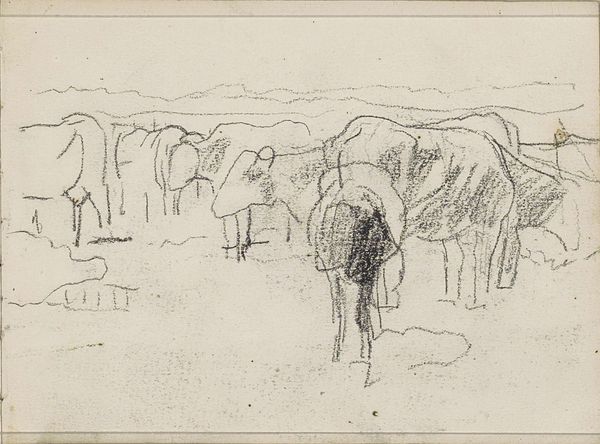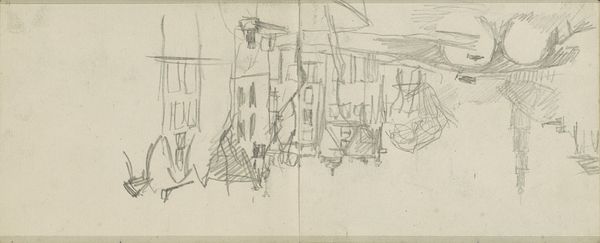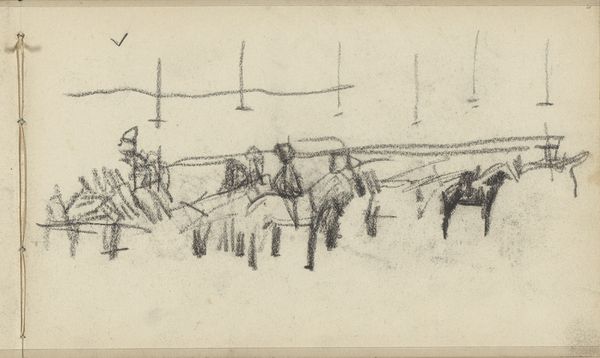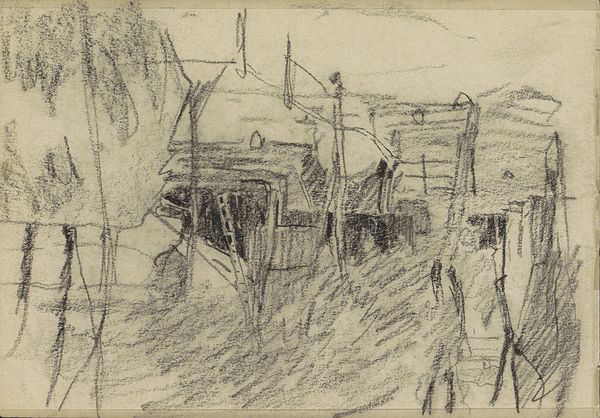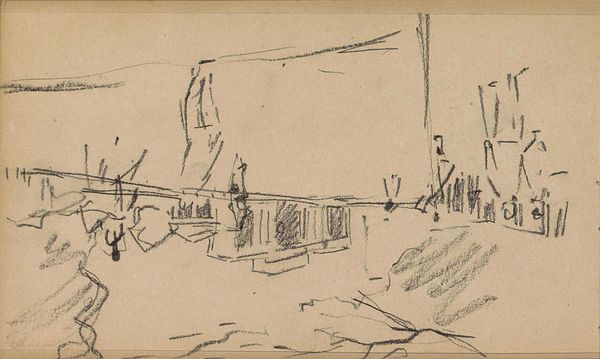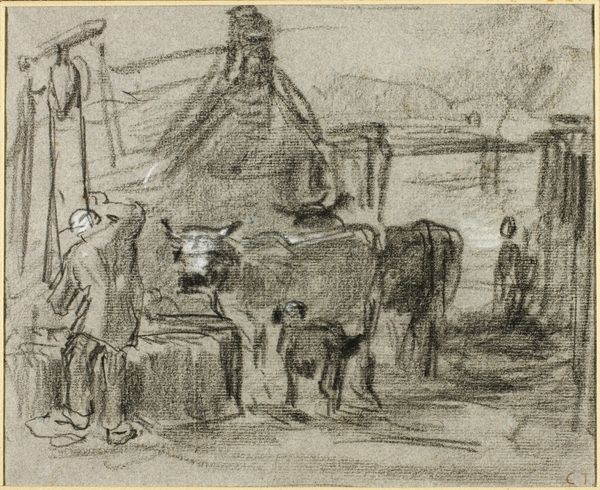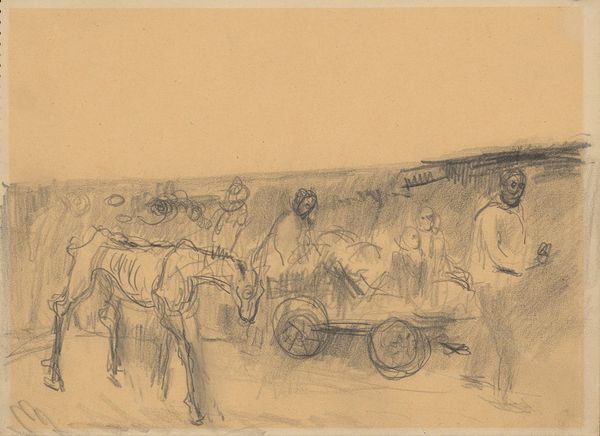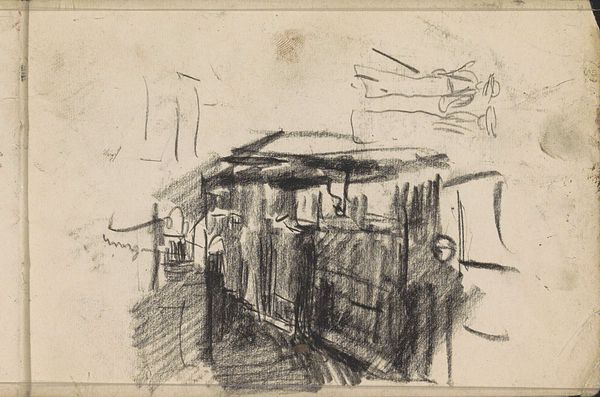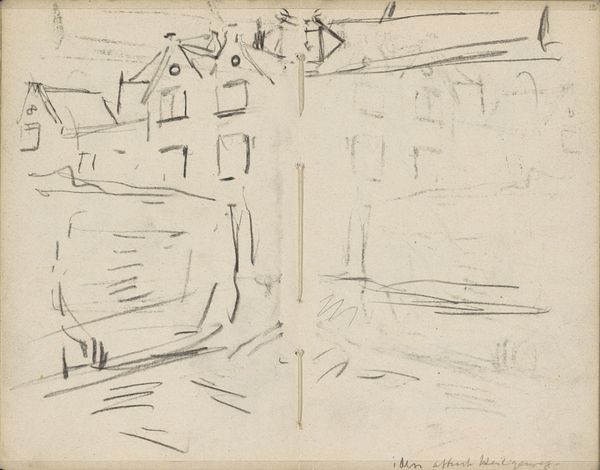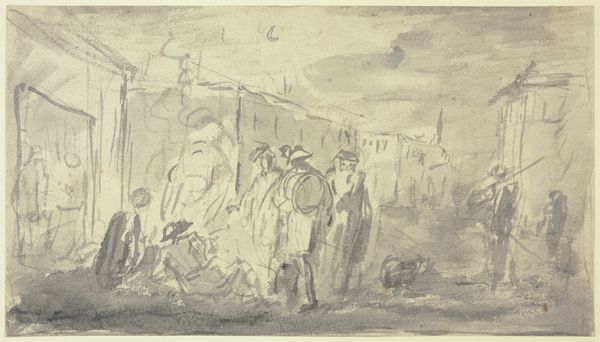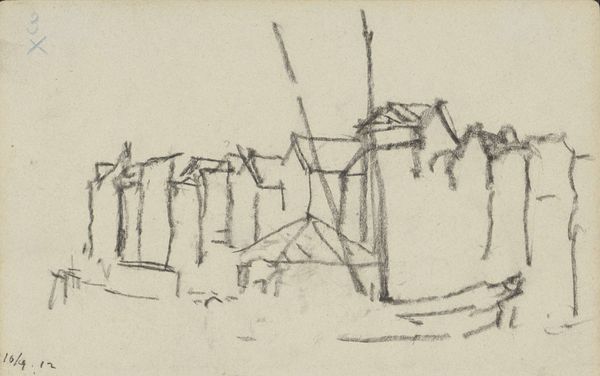
drawing, pencil
#
drawing
#
impressionism
#
form
#
road
#
pencil
#
line
#
cityscape
Copyright: Rijks Museum: Open Domain
Editor: This is "Wachtende rijtuigen in Londen," or "Waiting Carriages in London," a pencil drawing by Willem Witsen from around 1888 to 1891. It’s currently housed here at the Rijksmuseum. The scene is definitely evoking a time long ago; I feel the city life, but almost ghostly with this sketchy rendering. What do you see in this piece? Curator: I see more than just carriages; I see a commentary on transition. Carriages themselves represent a certain pace of life, a societal structure, a way of relating to space and time that was rapidly changing in the late 19th century. Consider the weight carriages held – symbols of status, symbols of a pre-industrial world. Witsen's impressionistic, almost blurred style seems to capture the fading relevance of this old-world image. Editor: So, it’s like he’s capturing the ghost of a bygone era? Curator: Precisely. Think of the psychological impact of the burgeoning industrial revolution on individuals experiencing that shift. The blurry lines of the drawing reflect that uncertainty, that lack of definition, wouldn’t you agree? Also, note how little emphasis there is on detail. Do you think that contributes to this feeling? Editor: I do. It definitely emphasizes the feeling of impermanence. Instead of crisp detail, we have blurred, indistinct lines; it creates a sense of distance, as though Witsen isn’t showing us something solid but alluding to it. I never considered the symbolism of the carriages as indicators of the changing pace of life at the time. It's really fascinating. Curator: Visual symbols always operate within particular temporal frameworks, they mirror transformations and ruptures throughout our history. Keep that in mind as you keep studying the work of Witsen.
Comments
No comments
Be the first to comment and join the conversation on the ultimate creative platform.
